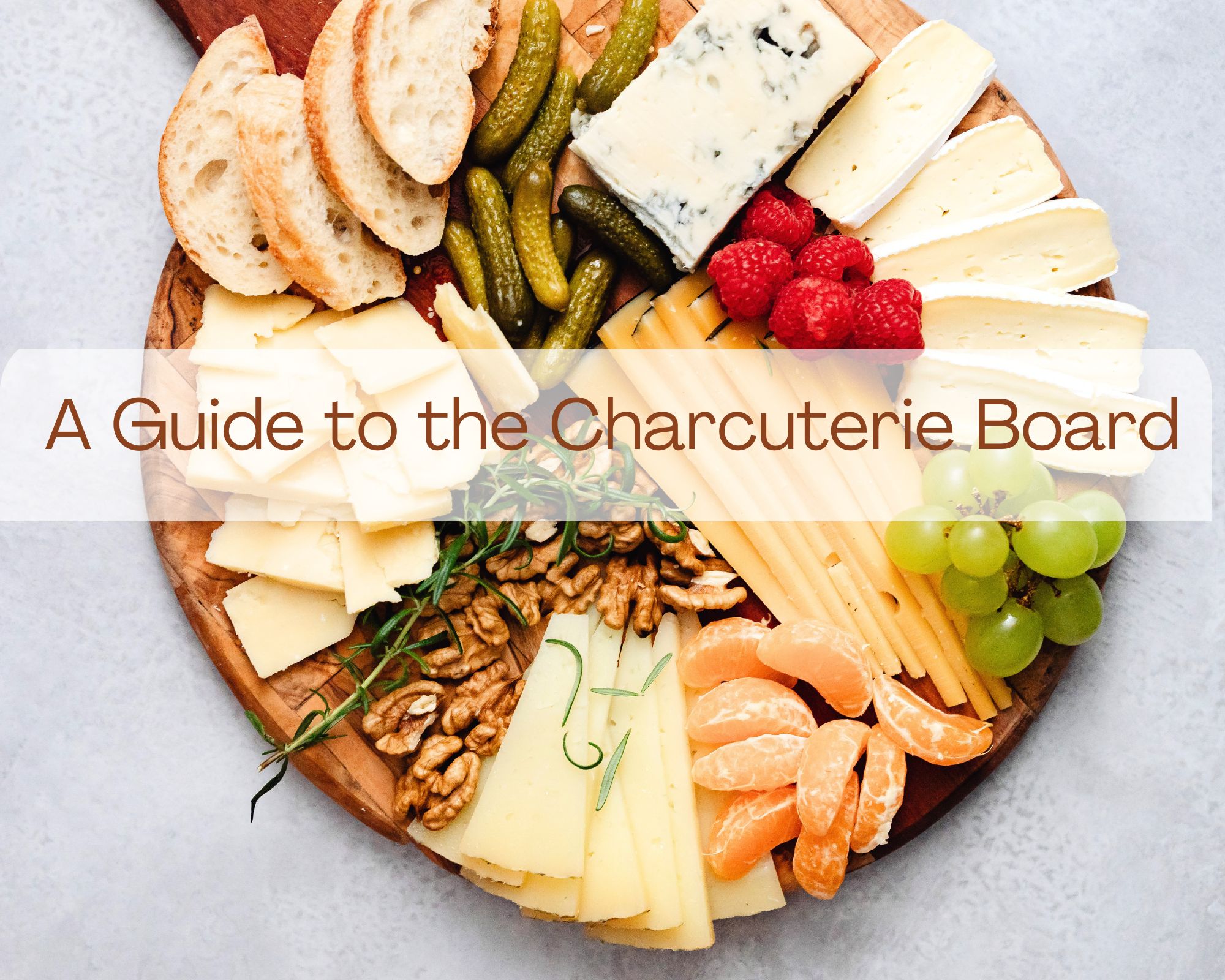Wooden boards bearing assorted meats, cheeses, and fruits are featured prominently at elegant soirees, on social media, and in nearly every appetizer menu you come across. Charcuterie is more than a throwback or trend, it’s a movement that has come to include ornate displays of breakfast items, desserts, and even the infamous butter board. But what is the true definition of charcuterie and how can you make this elegant platter of finger food at home?
What Is Charcuterie?
Charcuterie refers to a centuries-old method of preparing and preserving meat, perfected in France. Mainly pork and beef parts, these proteins are customarily cured with salt to help them last for the long haul. The term loosely translates to cold cuts, and became a well-established art in the 19th century. Boards that do not include pork and/or other cured meats may not be labeled charcuterie for this reason. Now, let’s learn what components comprise a great charcuterie board, and the best way to combine these ingredients.
Charcuterie Meats
PROSCIUTTO
This dry-cured ham is aged for up to two years, resulting in a buttery, luxurious texture. It’s customarily thin-sliced and can be enjoyed alone or wrapped around assorted fruits and veggies.
SALAMI
Salami is also a type of cured sausage, but it’s fashioned from fermented and air-dried meat. Some popular varieties include Genoa (mild with garlicky notes), Soppressata (a spicy take), and chorizo.
Coppa
Also known as capicola, this Italian cold cut is sourced from pork shoulder and neck. It’s seasoned with wine, garlic, and a host of spices. It offers a rich, savory flavor with a medley of notes from a varying herbs.
PATE
A paste usually made from ground meat and fat, often including liver. Pâté de campagne, also known as country pâté, is a rustic variety, while mousse-style pâtés are traditionally smooth and creamy.
Charcuterie Cheeses
BRIE
A wonderfully creamy cheese with a bloomy rind, brie is equipped with mild with a buttery, earthy flavor and pairs well with fruits, honey, and rustic bread.
CHEDDAR
This versatile cheese is popular for a reason – the flavor can range from mild to sharp. Aged cheddar has a crumbly texture and a nutty taste that complements cured meats and pleasantly sharp pickles.
GORGONZOLA
This Italian blue cheese is creamy, and boasts a bold, tangy flavor. Gorgonzola’s pungency is balanced by sweet accompaniments like figs or honey.
MANCHEGO
Try this Spanish cheese made from sheep’s milk for a no-fail charcuterie board. Manchego is firm with a buttery, slightly tart flavor. It pairs well with ingredients like almonds and quince paste.
Nuts, Fruits, and More
Breads and Crackers: Sliced baguettes, whole-wheat breads, and a variety of crackers serve as the perfect carriers for meats, cheeses, and spreads and allow the perfect vehicle for creating the perfect bite with a combination of items.
FRUITS
Fresh and dried fruits like grapes, figs, apricots add sweet notes and acidity to the richness of meats and cheeses.
NUTS
Be playful with almonds, walnuts, and pistachios tp provide a crunchy texture and distinct flavor, enhancing the overall charcuterie experience.
OLIVES AND PICKLES
Briny standouts like cornichons and marinated olives, cut through the richness of the charcuterie components, adding a refreshing contrast that is an absolute must-have.
How to Pair Charcuterie Ingredients
Creating a balanced charcuterie board involves thoughtful pairing to enhance and complement the flavors of each component. Here are some tips for achieving the perfect balance:
1. Contrast Textures and Flavors
Combine creamy cheeses with crunchy nuts, and pair sweet fruits with salty meats. The contrast in textures and flavors keeps the palate engaged and provides a well-rounded experience.
2. Balance Richness with Acidity
Rich, fatty meats like prosciutto and pâté benefit from the acidity of pickles and mustard. Similarly, the tanginess of blue cheese is balanced by sweet elements like honey or dried figs or the tang of a pickled onion or gherkin.
3. Consider Regional Pairings
Pair meats and cheeses from the same region for a coordinated flavor profile. For example, Italian prosciutto and Parmigiano-Reggiano, or Spanish chorizo and manchego.
Incorporate Fresh Elements
Fresh herbs, like rosemary and thyme, and fresh fruits can add a vibrant touch to your board, providing a burst of freshness that complements the cured and aged items.
Don’t Forget the Wine
A good wine can elevate the charcuterie experience. Lighter reds like pinot noir pair well with velvety cheeses and cured meats, while white like Sauvignon Blanc make perfect partners for tangy cheeses and briny accompaniments. For an alcohol-free option, consider sparkling water or a sophisticated mocktail.
Charcuterie is more than just a collection of meats and cheeses; it is a culinary art that celebrates the technique of preservation and the joy of shared experiences. By understanding the origins, selecting quality ingredients and thoughtfully pairing them, you can create a memorable charcuterie board that is not only visually significant but also a symphony of flavors.
